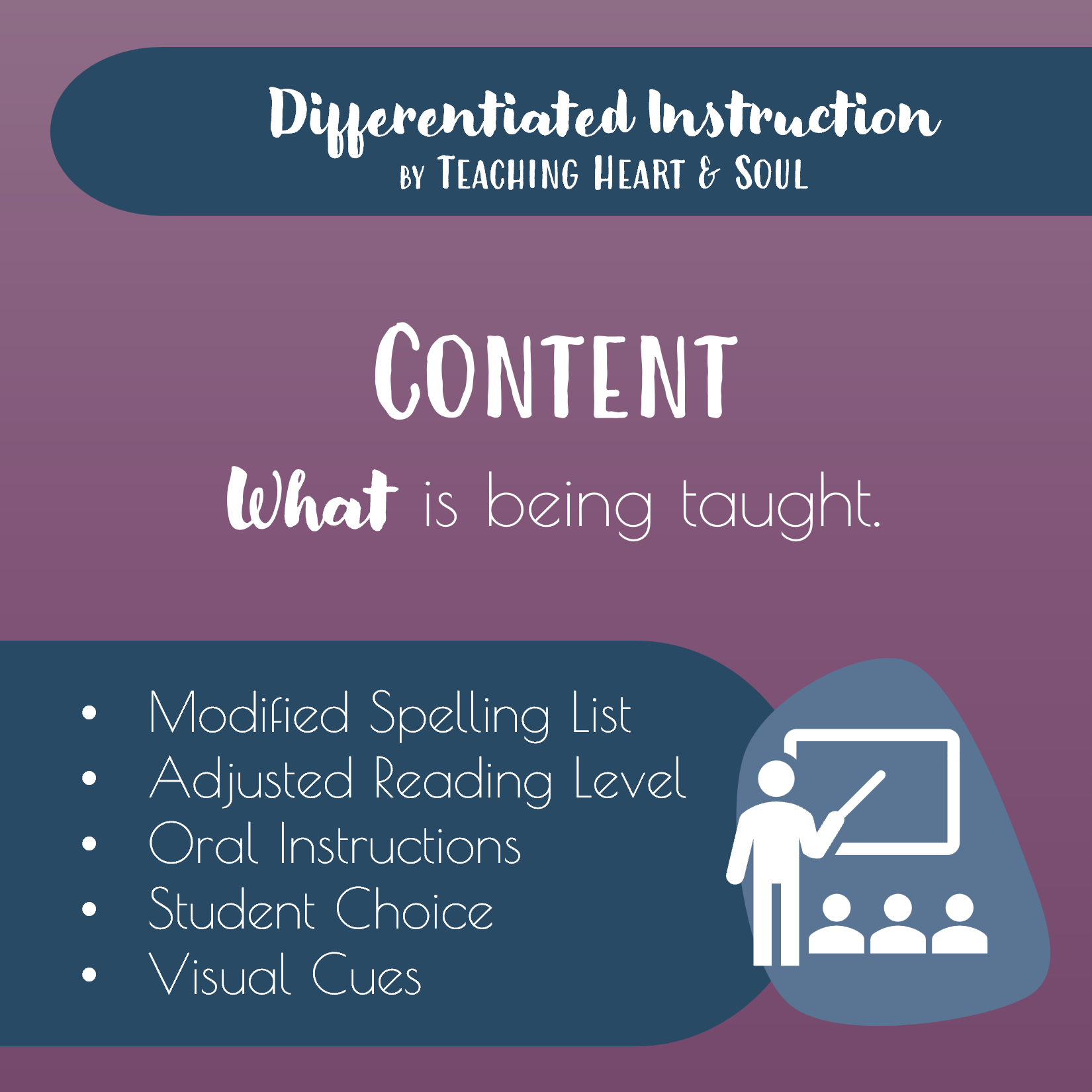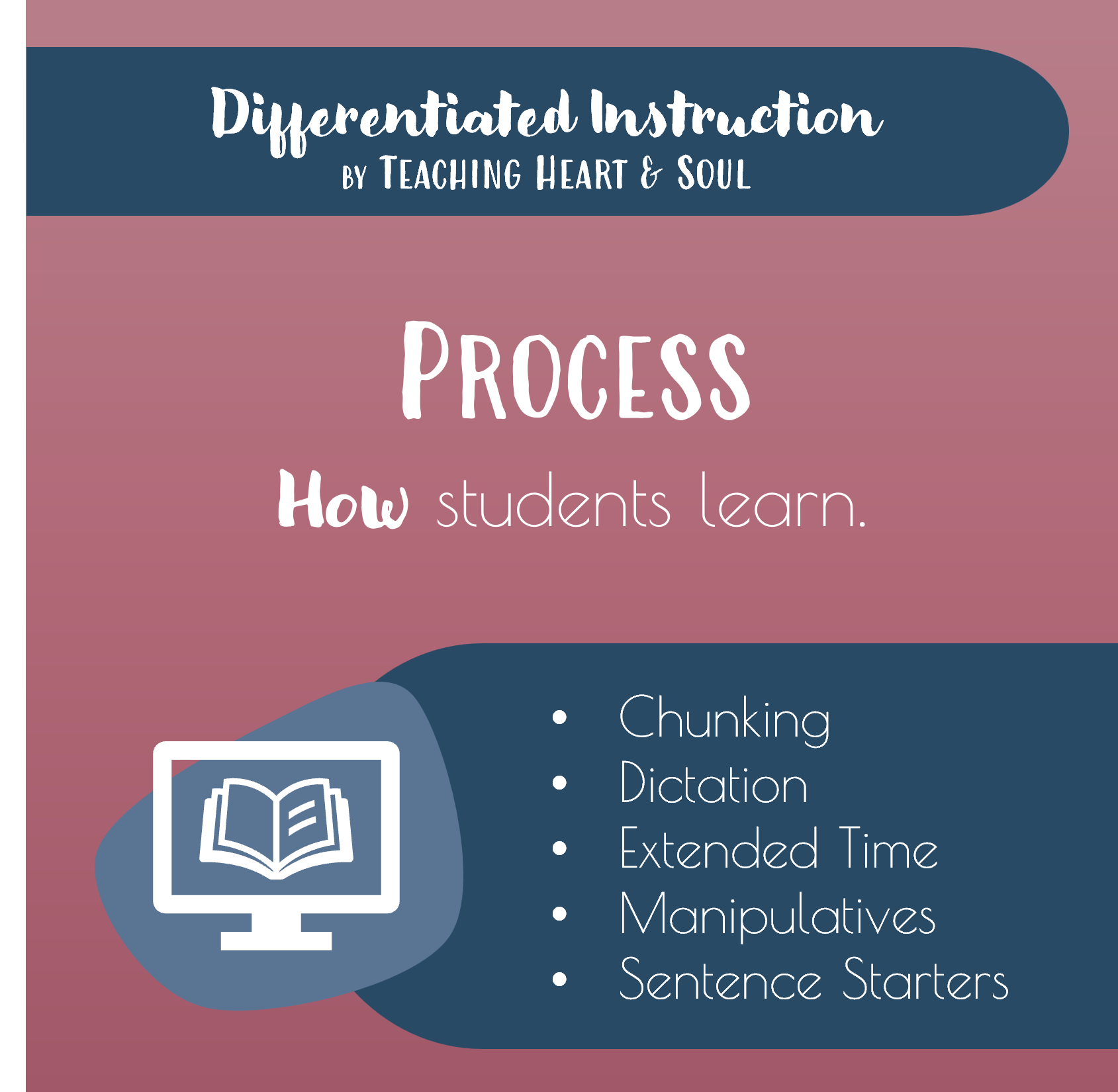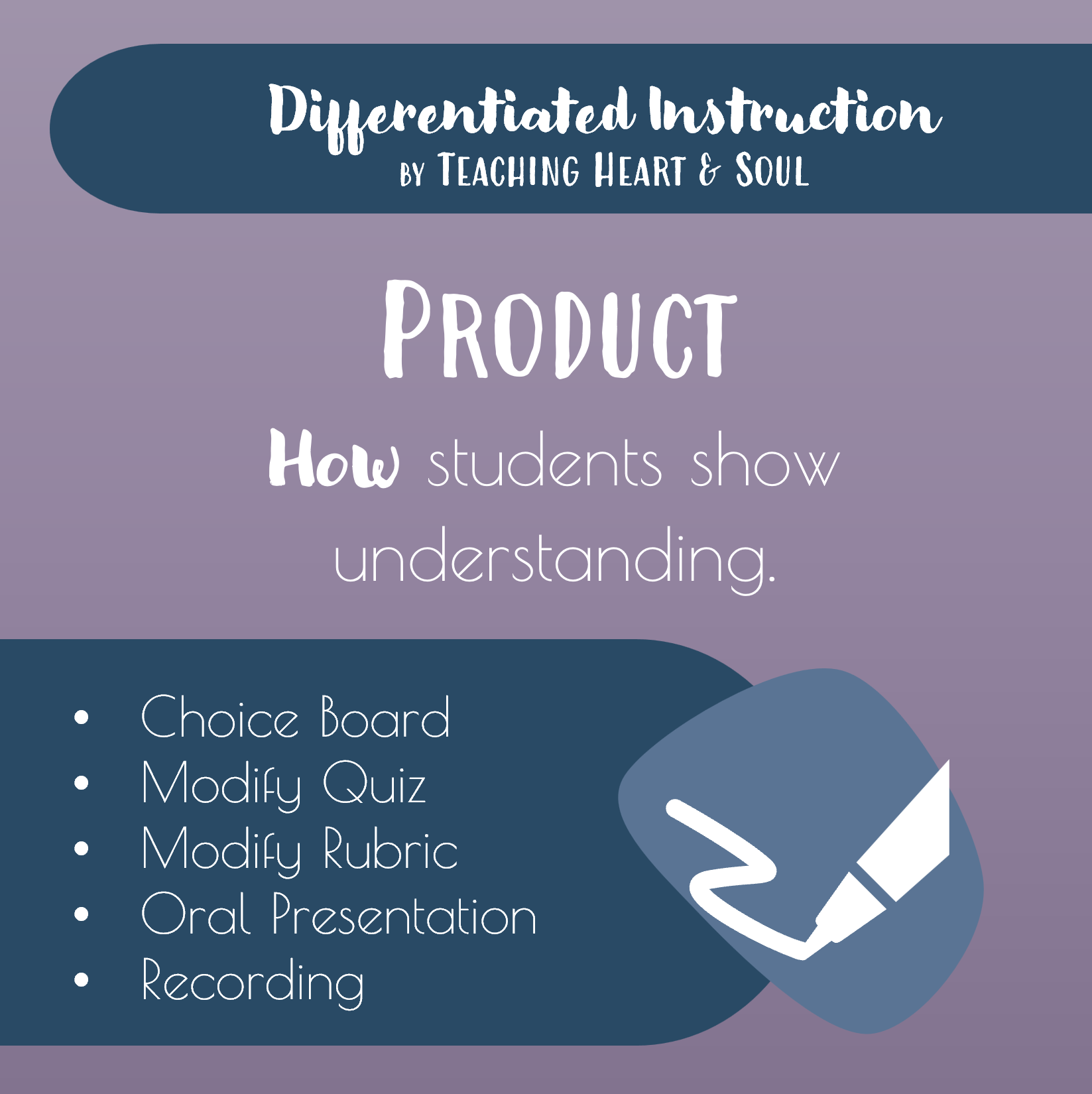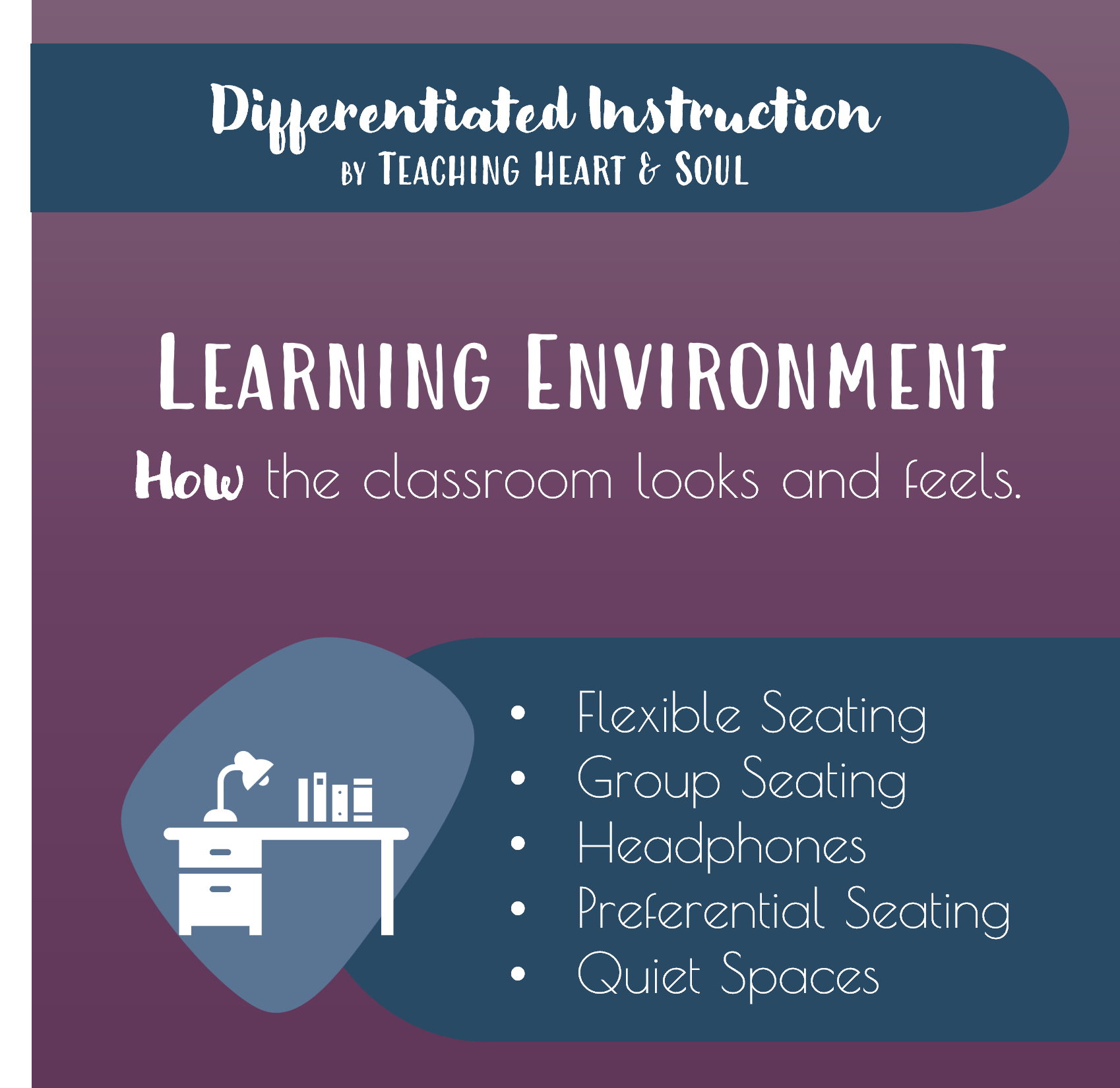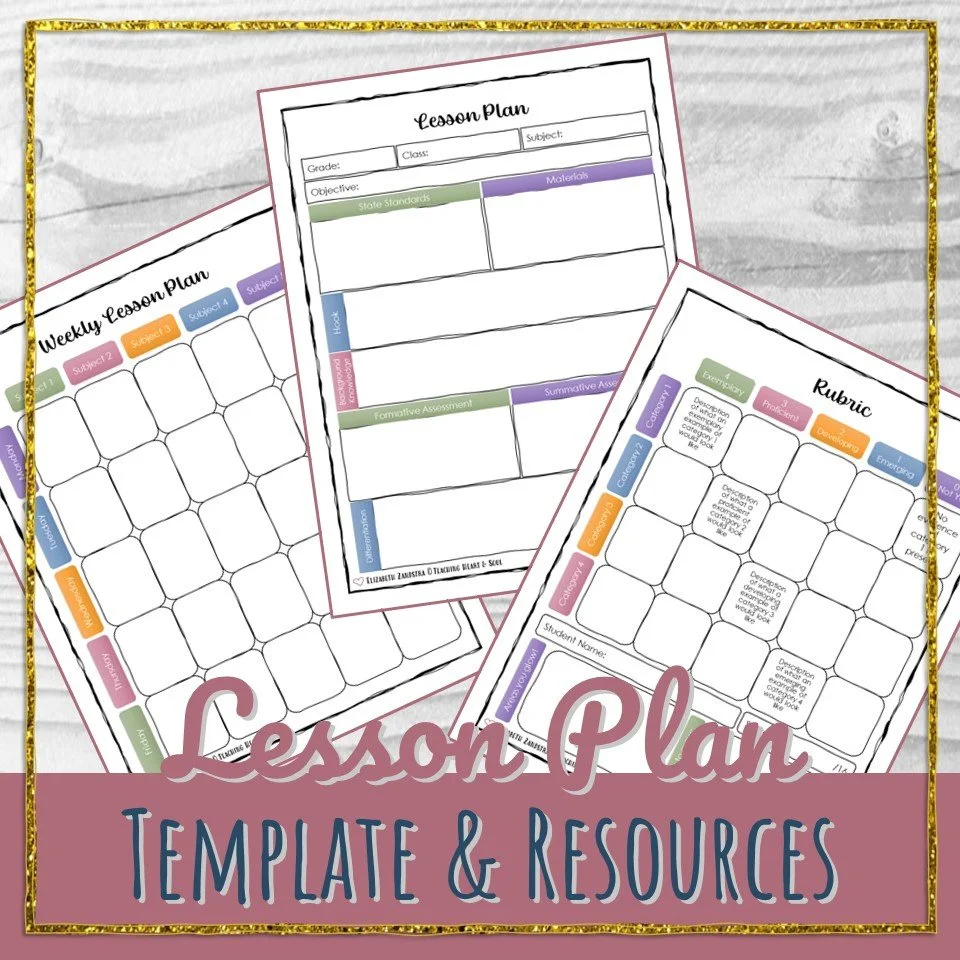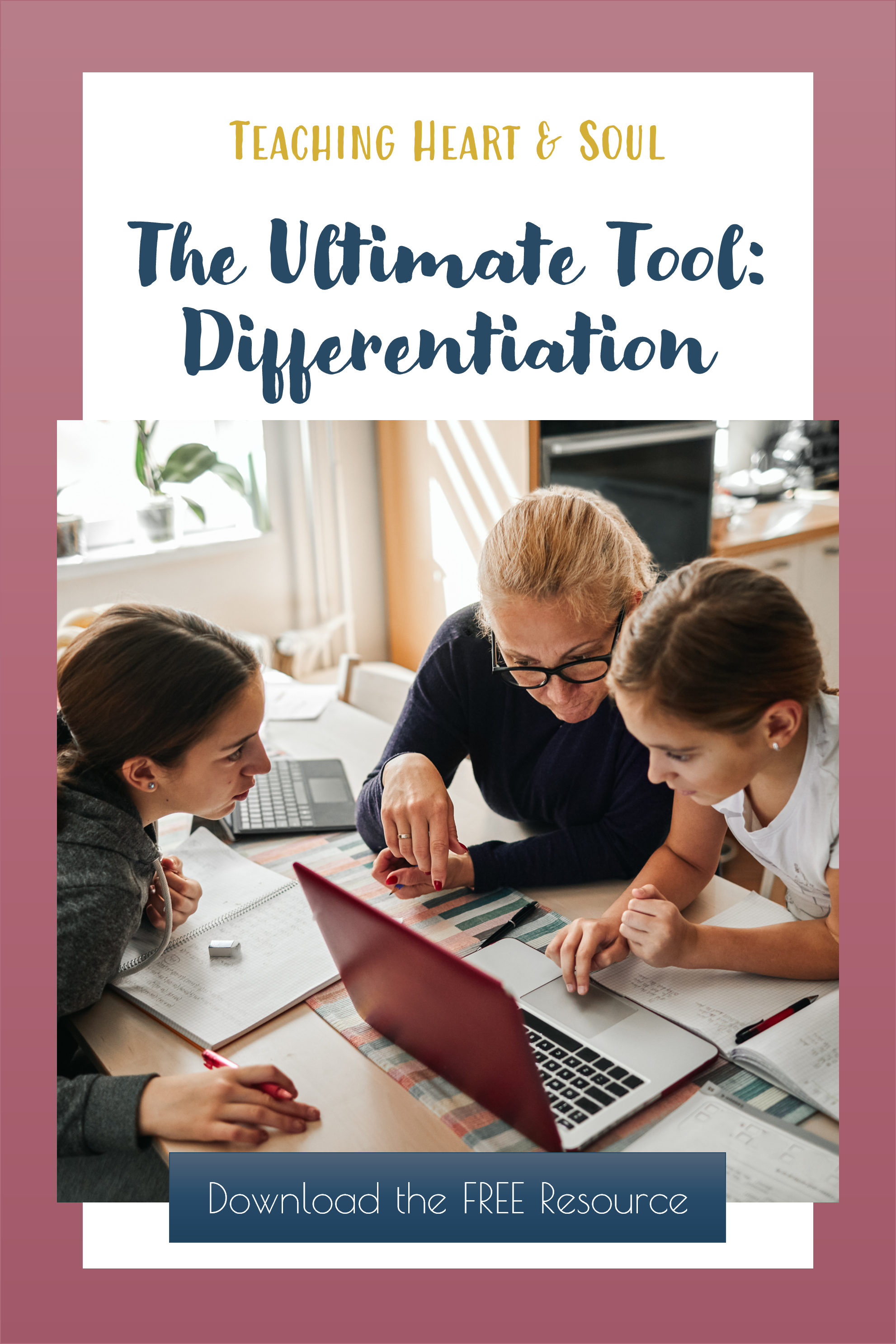Differentiated Instruction Strategies: 41 Ways to Differentiate
Differentiated instruction is so important to be able to meet the needs of all learners.
Students learn best when teachers differentiate instruction to meet the needs of different learning styles and create a personalized learning path for each student.
Academically diverse classrooms can be challenging, but the benefits of differentiated learning and instruction for students who have learning difficulties as well as gifted students is so important!
This style of teaching is student-centered because it prioritizes individual students and allows them to learn at their own pace and not feel pressured to keep up with the other students.
This is a skill that new teachers need to prioritize to help students learn well.
Check out Reading Rockets for more information on what differentiation is or keep reading for examples.
Why Differentiated Instruction Is Important
Differentiation is a teaching strategy where teachers tailor their course content to meet the diverse needs of their classroom, instead of concentrating on most students and letting some fall through the cracks.
There are many benefits of differentiated instruction.
Enhance Student Engagement
Implementing differentiated instruction can enhance student engagement and motivation by providing opportunities for individual learners to learn in ways that are meaningful and aligned to their learning style.
Kids are more likely to be invested in student work when they can make connections to their own interests and experiences.
Support Academic Achievement
Differentiation can support academic achievement by providing different kids with appropriate levels of challenge and support. Learners who are not challenged enough may become bored and disengaged, while those who can't keep up may become overwhelmed.
Social-Emotional Outcomes
Differentiation can promote positive social-emotional outcomes by creating a supportive and inclusive classroom environment where students feel valued and respected.
4 Content Areas
Differentiation can be implemented across four areas: content, process, product, and learning environment.
Content
Content differentiation involves modifying the material presented to students to match their readiness, interests, and learning style.
In the context of differentiated instruction, "content" refers to the subject matter or material that is being taught or presented to learners. This can include concepts, theories, facts, and skills needed to achieve specific learning objectives.
Teachers must carefully consider the content they are presenting and how it can be modified or adapted to meet the needs of individual students.
For example, teachers may differentiate content by providing alternative resources or materials or by offering extension activities or more complex tasks for advanced students.
Differentiated Instruction for Content
Modify Spelling List - Modify spelling lists according to ability, with review or advanced spelling words.
Reading Level - Give reading materials that are adjusted for each learner's reading level. Reading materials could include leveled texts, articles, novels, or passages.
Review - Give a pretest to see what skills need to be reviewed.
Oral Instructions - Give students oral directions in addition to written directions.
Student Choice - Allow learners to choose what they are learning about. For example, during a research project, allow students to decide on their research topic.
Visual Cues - When teaching, give visual cues and use graphic organizers.
Do you want this list as a FREE pdf for easy reference? Click here!
Process
Process differentiation, focuses on adapting the instructional methods and strategies to match individual learners' needs.
With differentiated learning, "process" refers to the different ways in which children can engage with the content. This involves providing students with various options for how they can complete tasks, activities, and assessments.
This can include varying support, modifying the type of materials provided, and adjusting the pacing of the learning experience.
One example is varying the level of support provided to students during independent work time. Some students may benefit from additional guidance or prompts, while others may prefer to work independently.
Another way to differentiate instruction for the process is to adjust the pacing.
For example, some children may need additional time to complete assignments, while others may need a faster pace in order to stay engaged.
Differentiating the level of challenge can also be a way to vary process.
Some learners may require simpler or tasks or more scaffolds, while others may need more complex assignments to stay engaged and challenged.
Using hands-on learning methods or opportunities to move around is a great way to support differentiated instruction.
Students learn in different ways and providing them with the flexibility and support they need through differentiated instruction will ensure that they engage with the content effectively.
Differentiated Instruction for Process
Checklist - Present learners with a checklist so they can keep track of what they need to accomplish.
Chunking - Give directions for each step separately.
Dictation - Allow students to verbalize their writing for a teacher to write down for them or utilize speech-to-text technology.
Extend Time - Give extra time to complete work.
Flexible Grouping - Group and regroup students according to ability.
Gamify - Allow the use of technology, computer games, or other physical games to practice skills.
Individual, Partner or Group - Allow students to work individually, with a partner, or in a small group according to their preferences.
Color Code - Help children organize written information by color coding or highlighting in different colors. For example, have students highlight information about Native Americans in green and European explorers in blue.
Manipulatives - Provide manipulatives for assistance. For example, give students fraction strips to complete fraction problems.
Note-Taking Organizer - Provide a note-taking organizer during research assignments or reading.
Outline - Provide students with an outline to fill out based on the lesson.
Phonetic Markings - Use phonetic markings to break down words, such as underlining digraphs.
Preteach - Preteach new vocabulary or phonics skills before teaching kids about reading.
Reference Sheets - Give learners reference sheets with information such as a transition word list, citation tag list, essay outline, etc.
Reward Progress - Reward students for finishing each step by putting a sticker on their paper next to the section they just completed.
Sentence Starters - Give students sentence starters to use with writing. (e.g. “One example of this is…)
Tiered Activities - Use tiered activities with different levels of support and challenge for the same content.
Visual Cues - Print out visual prompts for each step and give them to students to remind them what step they should be working on.
Click here to download this list as a FREE pdf (along with 21 lesson hook ideas, exit tickets, and more)! If you want lesson plan templates where you can include your differentiated instructional strategies along with the objective, standards, hook, assessments, and directions, check out these templates.
Product
Product differentiation involves adjusting the assessment end result.
For example, students may be given different options for a project, allowing them to showcase their learning in a way that aligns with their strengths and interests.
In the context of differentiated instruction, "product" refers to the final output or outcome of a student's learning experience.
Differentiation of product involves providing students with various options for how they can demonstrate their understanding and mastery of the content being taught. This can include different types of assessments, assignments, projects, or other products.
One example is offering choice in how students show understanding.
This can involve allowing students to choose between writing a paper, creating a visual display, delivering a speech, or creating a performance.
Another example is varying the format of the assessment itself. Some students may perform better on a multiple-choice test, while others may excel at a hands-on project.
This can also involve adjusting the level of complexity or challenge of the task. Some students may need more guidance or support to complete an assignment or project, while others may benefit from a more open-ended or challenging task.
Additionally, product differentiation can involve modifying the audience of the task. For example, students may present their learning to a peer group, to a teacher, or to an external audience.
Students have different strengths and learning styles. Providing them with a range of options is a great way to differentiate instruction.
By offering students choice and flexibility in how they show understanding, teachers can help to foster engagement, motivation, and deepen student understanding.
Differentiated Instruction for Product
Choice Board - Present students with a choice board that lists different options to show understanding. (e.g. diorama, speech, poster, essay, poem)
Modify Amount of Reading - Modify the amount of reading students must complete to demonstrate competency.
Modify Quiz - Modify a quiz or test to reflect student ability. For example, change open-ended questions to multiple-choice questions.
Modify Rubric - Modify the rubric to appropriately fit students’ abilities.
Oral Presentation - Allow students to give an oral presentation of their work. For example, allow students to verbalize the content of their essay.
Paragraphs or Sentences Required - Adjust the number of paragraphs or sentences students are expected to write for an essay.
PowerPoint Presentation - Allow students to show understanding through a PowerPoint presentation on the topic they learned.
Sentence Starters Framework - Give students a framework with sentence starters included to help them organize information for an essay or other project.
Recording - Allow students to record themselves reading or presenting information, rather than doing so in front of the teacher.
Would you like the FREE pdf listing these 41 differentiation techniques and a lot more? Click here!
Learning Environment
Differentiating the learning environment focuses on creating a classroom culture that respects and responds to the diverse backgrounds, needs, and interests of students. This may involve designing a differentiated learning space, that is flexible and inclusive, promoting collaboration and positive relationships among students.
In the context of differentiated learning, "learning environment" refers to the physical, social, and emotional atmosphere of the classroom that can affect students' engagement, motivation, and overall learning experience. It involves creating a classroom environment that meets the diverse needs of all students.
One example of a differentiated learning environment is providing a variety of seating options that can accommodate different learning styles and needs.
For example, some students may benefit from standing desks or fidget tools, while others may prefer comfortable seating or floor cushions.
Additionally, creating a visually appealing and organized classroom environment can also help to support student learning and reduce distractions.
Adjusting the social dynamics of the classroom is another way to differentiate instruction.
This can include implementing flexible small groups that allow students to work with a variety of peers and providing opportunities for collaborative learning.
Additionally, fostering a positive and inclusive classroom culture can help to create a safe and supportive environment where all students feel valued and respected.
Differentiation of the learning environment involves creating a classroom environment that is responsive to the diverse needs of all students. By offering a variety of seating options, social dynamics, and resources, teachers can create a classroom environment that is supportive, engaging, and inclusive.
Differentiated Instruction for the Learning Environment
Flexible Seating - Allow students to choose their own seating. For example, provide balance balls, desks, and pillows.
Group Seating - Provide space for students to work collaboratively.
Lighting - Adjust lighting as needed to meet students’ needs.
Noise-Cancelling Headphones - Provide students with noise-cancelling headphones to limit distractions.
Peers - Provide seating near or away from peers, depending on needs.
Preferential Seating - Provide seating close to the teacher or whiteboard.
Quiet Spaces - Provide students with quiet spaces without distractions.
Routines - Create routines for students so they know how to get support when needed.
Do you want a FREE reference sheet for these differentiation strategies? Click here!
This resource also includes 21 lesson hook ideas, 24 assessment ideas, and 10 posters & exit tickets for active learning.
Adding Differentiated Instructional Strategies to Your Lesson Plans
It is essential to implement differentiated instruction techniques into your lesson plans to meet student learning styles and student needs.
Teachers can begin by assessing their students' learning styles, strengths, and weaknesses. This information can help teachers create a variety of learning opportunities that cater to different learning styles.
For instance, some students may be visual learners, while others may be kinesthetic learners. Teachers can incorporate visual aids, hands-on activities, and group work to engage students with diverse learning preferences. Moreover, teachers should also consider students' cultural backgrounds and use instructional materials that reflect diversity.
Another practical step for adding differentiated instructional techniques to your lessons is to set learning goals for each student. Teachers can create individualized learning plans that target specific skills or knowledge areas that students need to improve. This approach allows teachers to provide differentiated instruction that meets the specific needs of each student.
Moreover, teachers can use assessment data to track students' progress and adjust instructional strategies accordingly. This data can help teachers identify areas where students need additional support or enrichment activities.
Additionally, teachers can use educational technology tools to provide students with additional resources and personalized learning experiences. These tools can include online tutorials, interactive games, and digital learning platforms that enable students to learn at their own pace.
If you're looking for a list of differentiated instruction strategies to easily incorporate them into your lessons, check out this FREE resource, which also includes 21 lesson hooks, 24 assessment ideas, & 10 posters and exit tickets.
If you want lesson plan templates where you can include your differentiated instructional strategies along with the objective, standards, hook, assessments, and directions, check out these templates.
Conclusion
Differentiation can support the diverse needs and interests of students in the classroom, leading to more meaningful and successful learning experiences.
A differentiated classroom is one in which classroom instruction meets the needs of diverse learners as teachers tailor their learning activities to their student population.
Further Reading:
Find 21 lesson hooks you can use to engage students on my blog HERE.
Read about 12 active learning strategies you can start using today HERE.


